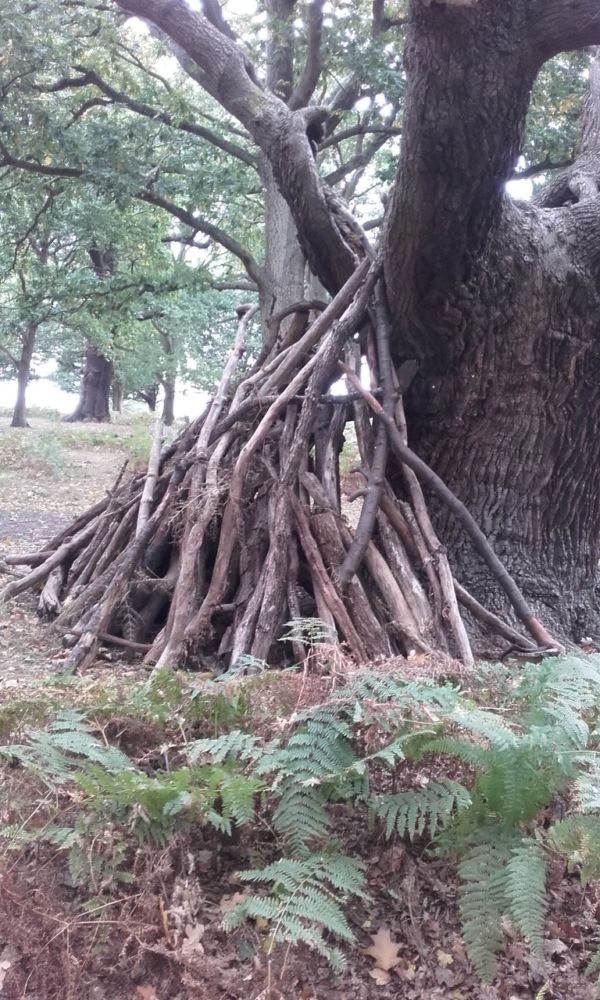About Dens
Header photo by Jamie Gould

To build or not to build a den?
We all need to be in contact with nature. We want people to enjoy visiting Richmond Park. But we share the space with a wonderful variety of wildlife.
Parks used to be tidy places. When a tree fell the timber was cleared away. Since the sixties this has changed. Fallen trees and branches cut back by the arboriculture team are left lying on the ground. A seemingly “dead” tree trunk will be left standing as long as it is safe to do so. All this seemingly “dead” wood becomes a valuable habitat for bats and birds, beetles and other invertebrates, fungi and lichens. As trees age, becoming a veteran, holes and hollow trunks develop. Jackdaws, parakeets, owls, nuthatches, stock doves and bees compete to use these cavities in the spring and summer as nesting sites.
In the autumn look for fungi and lichens growing on damp logs. The ground beneath a log remains damp and will be home to insects.
Den building seems to have become a must do activity but it does have a dark side. Wood is moved and leant against a tree to make a den. The wood dries out. Life dies out. Dry wood is truly dead wood.
The worst den I have come across was branches leant against a standing trunk where the builders had stripped the bark from the tree to pile onto their den. That bark would have sheltered bats, spiders and beetles. The dried out wood becomes a fire hazard. Branches (often heavy ones) leant against a veteran tree cause stress to the tree. Lifting the logs from the ground destroys the habitat for whatever was living underneath.
So what can we do to interest children while in the park? Look for butterflies, birds and insects. Watch and listen. Google to learn more about the wildlife you find. Start a diary of photographs to record your discoveries.
Tread lightly in the park. Look at or under a log to see who or what lives there. Replace the log – it is full of life as long as it remains damp! Dry logs are dead logs.
Why are dens a problem?
Habitat disturbance: A fallen log remains damp. It is home to insects, especially beetles, fungi, ferns, lichen and bacteria.
Fire hazard: Wood that’s not left on the ground becomes dry and burns too easily.
Damage to trees: Dens leant against old trees stress the tree, especially old trees.
Safety hazard: Large logs are used – teenagers and parents help with the building. Collapsing dens are dangerous!
Please don't build dens in Richmond Park National Nature Reserve

